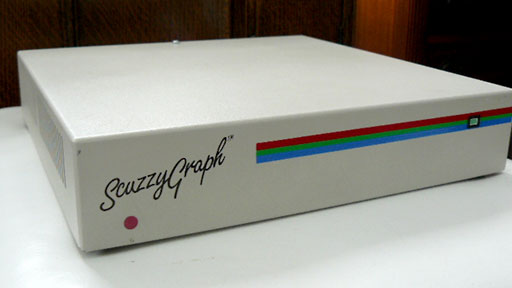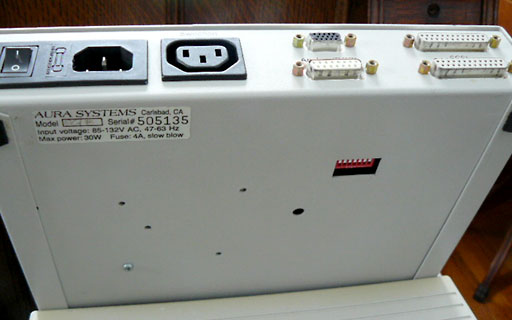Yeah, that's usually our aim. Hence why the previous hardware revision of the NuBus WiFi card was rejected. 40 chips! They're all like $0.25 each but we can just use an FPGA instead.Recall how Woziank used the fewest possible chips and paths to build the first Apple compared to other engineers of the day who used too many chips and paths?
We realized a long time ago that we have to do this stuff with the "minimum viable product" approach. We can't go right for the all-in-one gizmo. It would be too complicated, take too long to develop, cost too much money in every way (per unit, prototyping costs, setup costs, initial batch), etc. Instead we have to analyze the problem and find one thing that's doable and which, when finished, will deliver some functionality that people will enjoy and pay for so that we can make a little money and play another round of the hardware company game. If we commit to making some kind of all-in-one gizmo, the price will be high, the market small, and it's a lot of work and investment before we can sell any and put money back in the GW bank account. And we might have to cancel it as we did the WarpLC!I am wondering about the PDS pass-through and the number of cards. Since it is better to forgo the pass-through PDS stuff on the new accelerator cards, what about a dedicated PDS expander card that passes through and does not slow down or meddle with anything? Alternatively, would an all-in-one PDS card make sense to modernize a Mac SE or SE/30 down the road? Give the SE or SE/30 acceleration, 24-bt color video out (VGA and HDMI), and networking (802.11n, ac Wifi, or RJ45 Ethernet) to save money versus multiple PDS cards and PDS pass-through cards?
And I have to say, we make bad decisions and lose money a lot lol, for example by entering the 30-pin RAM SIMM market. Terrible decision! I am not sure we made any money selling RAM SIMMs, but yet we spent a lot of time doing RAM SIMM stuff. If we did make money, it was only because of our luck in purchasing several gigabytes of military-temperature-grade legacy DRAM chips back in 2019 at an exceptionally good price. The margins in RAM SIMMs are low, you have to beat the price of everyone else, the RAMs get lost in the mail and you have to resend them, the distributors of the legacy RAM chips keep raising the prices, the customers want help with why it won't work in their obscure 386 clone, etc. We thought all we had to do was master the quality of the electronics. Totally wrong! So it's good we had other products which were successful in putting money back into the R&D fund while we were busy wasting time and money on our bad decision getting into the 30-pin SIMM market. Imagine if we were screwing up in RAM SIMMs and simultaneously trying to pay for the initial batch of some fancy all-in-one gizmo. Well, GW never gets in debt, so "insolvency" is the wrong word, it'd be more like "out of gas."
So therefore we have to sort of find one step we can take, do that, and if that turns out good, try and find another development to pursue and maybe combine them. That's how to get to the all-in-one gizmo. But there is a lot of variance in the ultimate impact of one development so having a good strategy in choosing what to work on is important. Lemme illustrate.
The WarpSE is great and we fully intend on producing and supporting it for a long time (hence our desire to switch to FPGA-based CPU), but the WarpSE is sort of a dead-end. Other than modernizing the RAM and CPU, there are few unambiguously good changes to make. We could add networking! But I think it's better to do it with one of those new SCSI-to-WiFi gizmos. That way it's separate from the accelerator so people who don't know about accelerators but do know about networking can work on improving it. Okay, well we could add a second video output to the WarpSE! But the Mac SE doesn't have Color QuickDraw so it would only be 1-bit. And actually the OS itself doesn't support multiple monitors on the SE like on the Mac II and subsequent machines. To support drawing to multiple monitors, video card drivers for the SE have to patch QuickDraw and there are more compatibility issues compared to on a Mac that's supposed to have multiple displays. So the WarpSE is good but it's a bit of a dead-end. There's nothing really great to add to it and it, being an accelerator, is not something you really think of "adding" to another gizmo.
Now consider the NuBus WiFi card. It's much less of a dead-end. We can make the WiFi card and it would be popular. But then we could take the existing drivers, FPGA code, etc., remove the NuBus stuff, and attach it directly to an accelerator. That would be easy. And since the NuBus card is a separate (and less expensive) thing than the accelerator but shares all the drivers and stuff, there isn't the barrier to contributing that I was referring to earlier. If you are intimidated by improving the WiFi card in the context of the accelerator, you can improve it in the context of the NuBus card and anything you do will directly transfer over.
Putting it all together, networking and video output are much more coveted on an SE/30 than on an SE. Therefore we could design the WarpSE accelerator without having the other pieces (networking and video) but we couldn’t do the SE/30 accelerator without those. So we started the WiFi card and WarpLC projects. The WarpLC was supposed to have the WiFi card in it, but the WiFi module only costs a few bucks so we could just advertise the card as an accelerator. Once the WiFi card was finished, we could do a software update on the WarpLC and add WiFi. But even if we never finished the WiFi card, no big deal, the WarpLC would be okay without WiFi. Then with both the WiFi card and WarpLC in hand, the single big goal for the WarpSE/30 would have been the video subsystem since we could reuse most of the WarpLC and the WiFi stuff.
So we are eager for the chip shortage to be over so that we can figure out how to resume the plan I just described, incrementally building up into a great all-in-one gizmo which we can port to the various 68030-based Macs.
Edit:
Oh, regarding the pass-through card, yeah, if we did come out with an accelerator without video or networking, there would be no reason you couldn't make a splitter PDS card to hook up both the accelerator and your other card.
Last edited:



